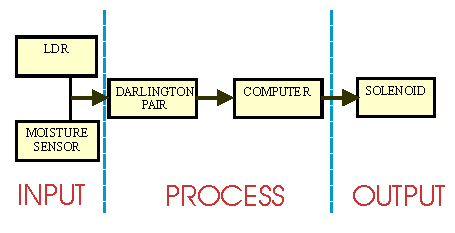
Introduction
Electronics is a science of controlled activities or movement of free electrons present in Atom of a matter. In simple words, it can be defined as the study of flow and control of electrons. This branch of physics and electrical engineering deals with the emission, behavior of electrons and effects of electrons. It uses active devices to control the flow or electrons by the process of amplification and rectification to give a desired output to do a task. The electrons can be controlled by devices that resist, carry, select, switch, store, and does more such actions.
The flow of electrical charge from one point to another is defined as electronics and the flow of electric charge is called current electricity/electricity. We cannot see the flow of electrical charge but can feel in the form of energy or light.
There are three main parts of electronic devices
- Input- inputs can be considered as the sensors like gas sensor, temperature sensor, motion sensor, and so on.
- Actuator- actuator is like our brain that works automatically when the sensors sense something externally.
- Output- output is like our hands that move automatically when a sensor senses something and our brain receives the sense and gives output as our hands move automatically.

What is the difference between Electronics and Electrical?
Electronics is a field of physics and electrical engineering that deals with the flow of charge i.e. electrons through non-metallic conductors (semiconductors). Electrical on the other hand deals with the flow of charge through metallic conductors. The flow of charge through silicon which is a non-mental for example would come under electronics. On the other hand, the flow of charge through copper which is a metal would come under electrical.
What is the difference between Electronics and Electricity?
Electricity is electromagnetic energy that flows around a circuit to drive an electric motor or any heating element. It can be used to power the appliances such as toasters, refrigerators, electric cars, electrical kettle, etc.
Electronics on the other hand is a subtle kind of electricity in which small electric currents are directed around complex circuits to process signals or store and process signals or store and process the information.
Applications
Electronics is a field that finds its application in Robotics, Aerospace, the Internet of Things, Industrial, Agricultural, and Consumer Products.

- ❖ Robotics: It is used in robotics to control the movement according to our requirements. It uses microcontrollers as their brains and various types of sensors and actuators as robots need precision and accuracy.
- ❖ Aerospace: Aerospace uses a special type of embedded electronics computing systems for easy control and manipulation.
- ❖ Internet Of Things: It is basically a physical device that is connected to the internet. Through this, media files sharing, communicating and manipulating can be done. Today, millions of devices are connected to the internet to ease the processes.
- ❖ Industrial: All the industries use electronics for telecommunications.
- ❖ Agriculture: It is also used in agricultural fields to monitor dampness of soil and maintain balanced soil deposition.
- ❖ Consumer Devices: Everyday we use electronics devices like TV, Radio, Computers and Mobile Phones, and so on.
That is all for now. We hope that this article has helped you get a clear understanding of electronics, how it is different from electricity and electrical. In the upcoming articles, we will learn about Blinking LED using Astable Mode of 555 timer IC and monostable Mode of 555 timer IC, how basic LED works, how we can make a smart lamp, burglar alarm, and much more. Sounds interesting, Stay connected and we promise, you will get to learn a lot.

